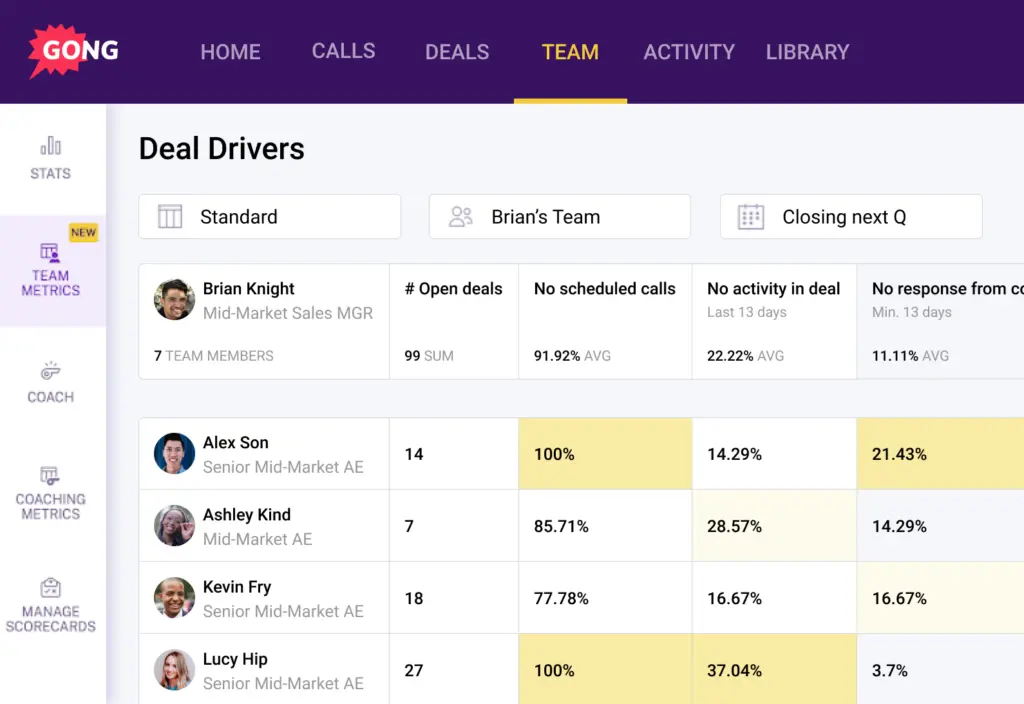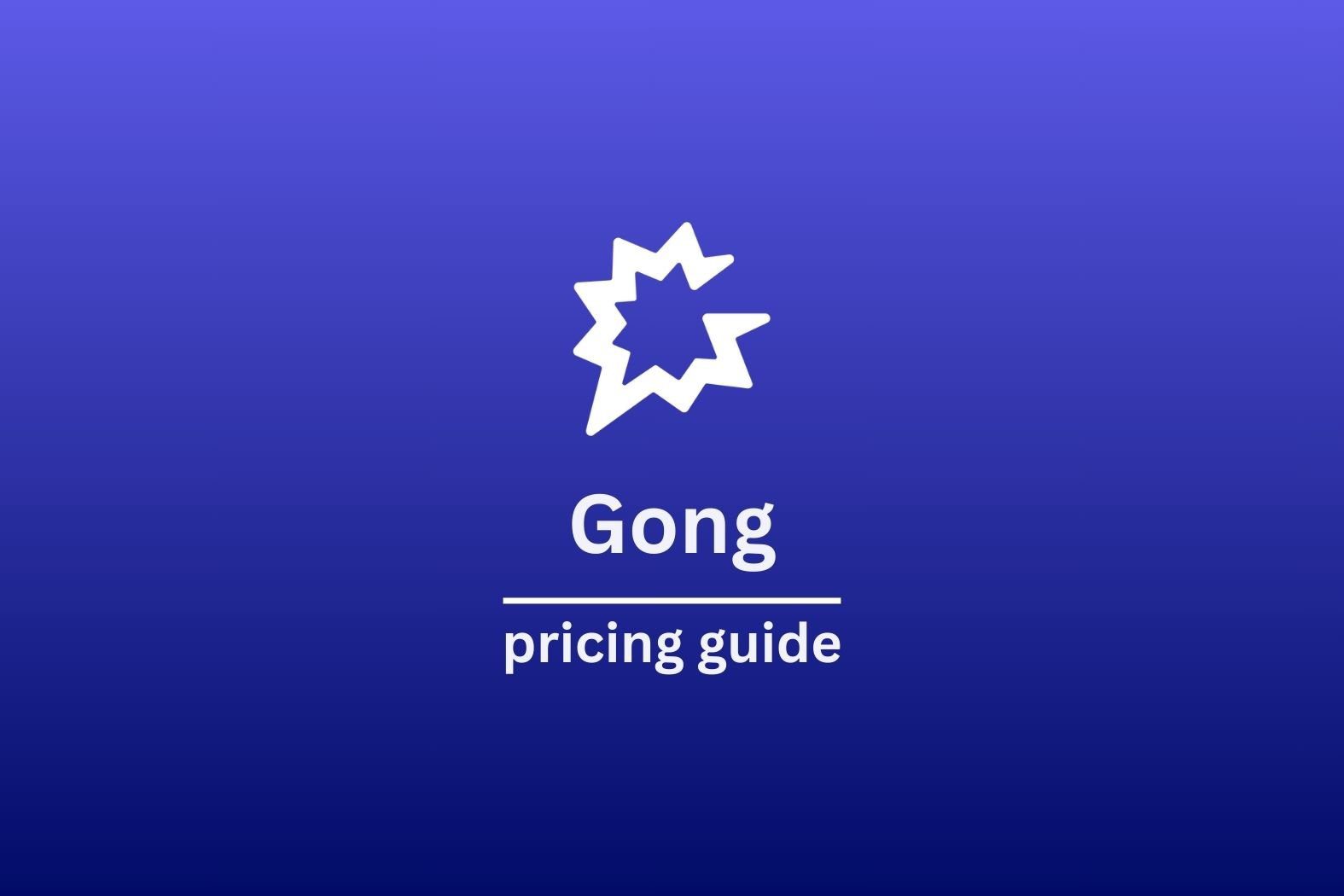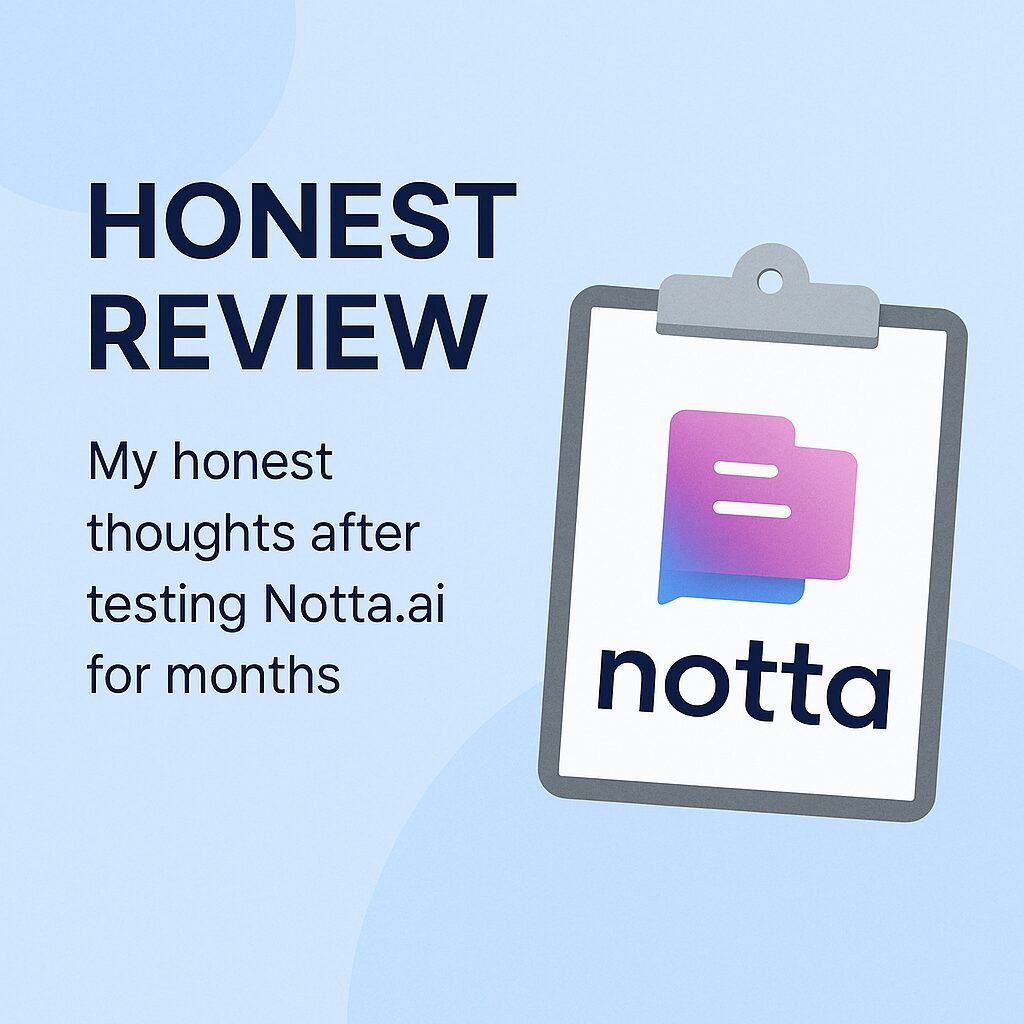Sales teams today are quite lucky that today, in sales, every interaction is recorded, analyzed, and scrutinized.
To do so, one tool has become particularly well- known – Gong.io. It’s tipped that it will transform sales conversations, emails and all interactions into easy to use insights that drive revenue. With AI-powered tools that can dissect every word of a sales call, Gong promises to level up the way teams approach their sales strategies.
But there’s a hitch. Despite its prowess in the sales intelligence world, Gong’s pricing details appear to be a well-guarded secret. For businesses trying to figure out if Gong fits within their budget, the lack of transparency can be frustrating. Instead of clear-cut numbers, potential customers are left guessing until they engage with Gong’s sales team.
This article aims to clear the fog around Gong’s pricing structure. We’ll break down how Gong charges for its services and offer estimates to help you gauge the potential cost for your business. We’ll also introduce tl;dv, a compelling Gong alternative that offers similar features without the steep price tag, giving you the tools you need to make an informed decision.
Gong in Sales and Revenue Intelligence
Gong.io has established itself as an incredible tool for sales teams seeking to enhance their performance and boost revenue. Initially, Gong entered the market as a conversation intelligence platform, complete with its own AI-driven offering (not utilising OpenAI’s) offering features like call recording and transcription that allowed teams to review and analyze their sales interactions.
But Gong didn’t stop there; it evolved into a full-fledged revenue intelligence platform, integrating deeper analytics and AI-driven insights to help businesses not just understand their sales conversations, but connect them to broader revenue outcomes.
At the heart of Gong’s offering is its ability to transform raw sales data into actionable intelligence. Sales managers can use Gong to track key performance indicators, identify successful strategies, and even predict future outcomes based on historical data. By capturing and analyzing every interaction with customers, Gong provides a level of visibility that allows businesses to continuously refine their sales approach. This not only helps individual sales reps improve their techniques but also gives leadership a bird’s-eye view of the entire sales pipeline, helping to steer the company toward its revenue goals.
For anybody in sales, it sounds like a magic wand that can make all the deals magically fall into your lap.

What Are The Key Features of Gong?
Call Recording and Transcription
One of the cornerstone features of Gong.io is its call recording and transcription capability. But this isn’t just about keeping a log of sales calls. Gong’s transcription feature converts every spoken word into searchable text, allowing teams to dive into specific conversations to retrieve key details, identify patterns, and learn from every interaction. The value here isn’t just in having a record—it’s in the ability to revisit and analyze these conversations with precision, ensuring that no critical information is lost in the shuffle.
For instance, sales teams can use Gong to track how frequently certain objections come up in calls, how effectively reps are handling these objections, and what messaging resonates most with prospects. This data is then used to refine sales scripts, train new hires, and develop strategies that are grounded in real-world interactions. By turning every call into a learning opportunity, Gong helps sales teams become more effective and efficient over time.
AI-Driven Call Analysis
Gong takes the data from these transcriptions and goes a step further with AI-driven analysis. This feature doesn’t just show you what was said—it interprets the conversation, providing insights that can help improve future interactions.
For example, Gong’s AI can analyze the talk-to-listen ratio, detect topics discussed during the call, and assess customer engagement throughout the conversation. This allows sales reps to understand not just the content of their calls, but the dynamics at play—are they talking too much? Are they addressing the customer’s needs effectively? Are there any red flags that need to be addressed in the next follow-up?
The AI-driven insights also extend to larger patterns across multiple calls. Gong can identify trends in customer sentiment, highlight common questions or concerns, and even predict which deals are at risk based on historical data. By having this level of analysis, sales teams can make more informed decisions, prioritize their efforts on the most promising leads, and avoid potential pitfalls before they become costly mistakes.

Market Intelligence
Beyond individual conversations, Gong also offers a broader view of market intelligence. By analyzing data across all sales interactions, Gong can identify shifts in customer behavior, emerging trends in the market, and potential opportunities or threats. This kind of market intelligence is invaluable for sales teams and leadership alike, as it provides a macro view of what’s happening in the industry and how it might impact the business.
One way that this works is that Gong might reveal that a particular product feature is gaining traction with customers, indicating a potential area for further development or marketing focus.
Conversely, it might highlight a growing concern among customers that needs to be addressed to prevent churn. By providing this level of insight, Gong helps businesses stay ahead of the curve and make strategic decisions that are informed by real-time data.
Gong Pricing: How It Works
Why Gong’s Pricing is Not Public
One of the biggest challenges for businesses considering Gong is figuring out what it will actually cost. Unlike many software platforms that list their prices upfront, Gong takes a different approach, which is common among many SaaS companies. Pricing is customized for each client based on a variety of factors, including the size of the sales team, the specific features needed, and the overall scope of the engagement. This means that the cost of Gong can vary widely from one business to another.
However, this approach is often more than just a way to meet the unique needs of each customer. While Gong’s intention may be to tailor its offerings to provide value to businesses of all sizes, this strategy can also serve as a powerful negotiation tool for the company. By requiring potential customers to engage in a sales call, Gong—or any SaaS company using this tactic—can set the terms of the conversation, making it easier to upsell, adjust pricing based on the customer’s perceived budget, or justify the cost based on the unique value they promise to deliver.
This method can be particularly beneficial for customers who are skilled negotiators, as it opens the door for discussions around discounts, customized features, or tailored service packages. On the flip side, it can be frustrating for those who prefer transparency and would rather know upfront whether a tool fits within their budget.
While Gong might not engage in some of the more aggressive pricing strategies seen in other companies, such as creating a tiered customer value system where higher-paying customers receive better treatment, the lack of upfront pricing can still be seen as a tactic to avoid scaring off potential buyers with sticker shock. Ultimately, for businesses considering Gong, it’s important to be prepared for a sales conversation where the pricing could be flexible—depending on how the negotiation goes.
Components of Gong’s Pricing Structure
Per-Recorded-User Licensing
Gong’s pricing starts with a per-recorded-user licensing model. This means that you’ll pay for each user who needs access to the platform’s call recording and transcription features. However, it’s not just a simple flat rate—Gong offers different tiers or “seat editions” of licenses, each with varying levels of functionality. For example, a basic seat might include core features like call recording and transcription, while a more advanced seat could offer additional analytics tools and AI-driven insights.
This tiered approach allows businesses to choose the level of service that best matches their needs. A small team might only require basic seats, while a larger organization with more complex needs might opt for the advanced seats. The cost per seat can range from a few hundred to a few thousand dollars annually, depending on the level of service required.
Platform Fee
In addition to the per-user licensing costs, Gong charges an annual platform fee. This fee covers the underlying infrastructure of the platform, including data storage, integrations with other software tools (like your CRM), and ongoing updates to the system. The platform fee is typically based on the size of your business and the volume of data you’ll be storing and processing through Gong.
For smaller businesses, this fee might be relatively modest, but it can increase significantly for larger organizations with more extensive data needs. For example, a small business might pay around $5,000 per year for the platform fee, while a large enterprise could see this cost rise to $50,000 or more. The platform fee is an essential part of Gong’s pricing structure, as it ensures that the system can scale to meet the needs of businesses of all sizes.
Optional Add-Ons
Gong also offers a range of optional add-ons that can enhance your experience with the platform. These add-ons might include advanced analytics tools, custom integrations, or premium support services. For example, if you want to integrate Gong with a specific CRM system or need additional training for your sales team, these services would come at an additional cost.
While these add-ons can significantly enhance the value of the platform, they also add to the overall cost. It’s important for businesses to carefully consider which features and services are truly necessary for their operations, as opting for too many add-ons can quickly drive up the price. However, for those businesses that need the extra capabilities, these add-ons can provide a significant boost to their sales and revenue intelligence efforts.
How Much Does Gong Cost?
Herein lies the question, and when you ask many salesperson this the typical reply is “how long is a piece of string”! However we have tried to break down the cost based on what we have research and found out.
Estimating the Total Cost of Gong
Platform Fee Estimates
While Gong’s pricing is customized, there are some general estimates that can help businesses gauge what they might expect to pay. The platform fee, which covers the core infrastructure and services, typically ranges from $5,000 to $50,000 per year, depending on the size and needs of the business.
For example, a small startup might pay closer to the $5,000 mark, while a large enterprise with extensive data and integration needs could see their platform fee climb to $50,000 or more annually.
This fee is to ensure that Gong’s system can scale to meet the demands of your business. It covers everything from data storage and security to system updates and integrations with other software tools. While the platform fee is a significant part of the overall cost, it’s also what ensures that Gong can deliver the level of service and reliability that businesses expect.
Cost Per Seat
The cost per seat is another key component of Gong’s pricing structure. This cost can vary widely depending on the type of seat you choose. For example, a basic seat might cost around $1,200 per year, while a more advanced seat with additional features could cost upwards of $1,600 per year. For larger teams, there may be opportunities to negotiate volume discounts, which can bring the cost per seat down to around $1,000 or even lower.
The cost per seat is determined by the level of functionality you need. A basic seat might include core features like call recording and transcription, while an advanced seat might offer deeper analytics and AI-driven insights. By choosing the right mix of seats for your team, you can ensure that you’re getting the features you need without overpaying for unnecessary extras.
Example Cost Scenarios
To give you a better idea of how these costs can add up, let’s look at a few hypothetical scenarios:
- Small Business (10 Users): With a platform fee of $5,000 and each seat costing $1,200, the total annual cost could be around $17,000. This would include access to the core features needed to record and analyze sales calls, making it a solid investment for a growing team.
- Medium Business (50 Users): With a platform fee of $20,000 and a discounted seat cost of $1,000, the total annual cost could be $70,000. This setup would provide the additional analytics and insights needed to support a larger team and more complex sales operations.
- Large Business (200 Users): With a platform fee of $50,000 and further seat discounts bringing the cost to $800, the total annual cost could be $210,000. For a large enterprise, this investment would provide comprehensive sales intelligence capabilities across the entire organization, helping to drive revenue growth on a massive scale.
Why Consider Alternatives to Gong?
While Gong offers a powerful set of tools for sales and revenue intelligence, its pricing can be a significant barrier for smaller businesses or those with limited budgets. Additionally, not every company needs the full range of features that Gong provides. For some, the core functionalities like call recording and transcription are sufficient, making the additional cost of advanced analytics unnecessary.
In these cases, exploring alternatives like tl;dv can be a smart move. tl;dv offers many of the same essential features as Gong but at a fraction of the cost. This makes it an attractive option for businesses that need reliable sales intelligence tools without the financial commitment that Gong requires.
tl;dv: The Best Alternative to Gong
tl;dv is an affordable alternative to Gong, designed for teams that need the essentials without the extras. tl;dv offers high-quality call recording, transcription, and AI-driven insights, making it a strong contender for businesses looking to optimize their sales process without breaking the bank. While it may not have every feature that Gong offers, tl;dv covers the basics that most sales teams need to succeed.
Key Features of tl;dv
tl;dv doesn’t just mimic Gong—it offers a streamlined, user-friendly experience that’s tailored to the needs of small to medium-sized businesses. With tl;dv, you can record and transcribe sales calls, analyze customer interactions, and gain insights that help improve your sales strategy. The platform’s AI-driven tools provide actionable data, much like Gong, but without the steep learning curve or price tag.
For example, tl;dv’s transcription feature ensures that every word of your sales calls is captured and converted into searchable text. This allows sales teams to quickly review and analyze conversations, identify key moments, and make data-driven decisions. The AI-driven insights provide additional context, helping teams understand customer behavior and refine their approach for future interactions.
tl;dv also offers objection handling AI coaching, and customizable playbooks that can be adapted to your sales approach (MEDDPICC/BANT/SPIN). This offers that incredibly level of insight, for a fraction of a cost, and also avoids the ethical and legal issues that come with the sentiment analysis aspect of Gong as well.
tl;dv Pricing vs Gong Pricing
One of the biggest advantages of tl;dv is its transparent and affordable pricing structure. Unlike Gong, tl;dv’s pricing is publicly available and easy to understand, with tiered plans that scale based on your needs. For example, small teams might pay just a few hundred dollars per year, making it a highly accessible option for startups and growing businesses.
tl;dv starts off with a freemium model which allows recording and many of the features, going up to $18 per month/per user (paid annually) for Pro, then the sales-focused Business package (which is the closest like-for-life with Gong) is $59 per seat/month/billed annually or $98 billed monthly.
To put that into perspective, if that medium business of 50 users would have spent $70,000 on Gong.io, the cost for that same team using tl;dv (with no platform fees, additional costs etc) would be $35,400.
That’s HALF the cost.
For those who need more advanced features, tl;dv offers higher-tier plans that include additional tools and services. However, while you do have to get in touch tl;dv to discuss these even these plans are priced significantly lower than Gong, making tl;dv a cost-effective alternative for businesses of all sizes. You can also try before you buy which Gong doesn’t offer.
Why tl;dv Might Be a Better Fit
tl;dv is particularly well-suited for businesses that need a reliable, easy-to-use platform without the financial commitment that Gong requires. For companies with smaller teams, or those that are just starting to explore sales intelligence, tl;dv offers a great balance of functionality and affordability. It’s also a good choice for teams that don’t need extensive market intelligence but still want to improve their sales conversations and customer interactions.
So while Gong offers a comprehensive set of tools for sales and revenue intelligence, its pricing can be prohibitive for some businesses. tl;dv provides a strong alternative, offering many of the same essential features at a fraction of the cost. Whether you’re a startup looking to get off the ground or an established business seeking to optimize your sales process, tl;dv offers a compelling solution that’s worth considering.
Is Gong’s Pricing Right For You?
Understanding Gong’s pricing structure is key to deciding whether it’s the right fit for your business. While the platform offers powerful tools for sales and revenue intelligence, the cost can be significant, especially for smaller teams. That’s why it’s important to explore alternatives like tl;dv, which provide many of the same core features at a more affordable price point.
Ultimately, the best choice depends on your specific needs and budget. By carefully evaluating your options, you can find a solution that delivers the insights you need without straining your finances.














